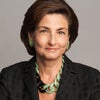The cover story in the Summer issue of The American Scholar contains landmark analysis by Lincoln Caplan, visiting lecturer at Yale Law School and senior advisor to Encore.org, on the need to reconsider the old-age dependency ratio [OADR]. While the ratio may initially seem esoteric, understanding the subject is crucial to the ways we value old age and its rich potential.
The OADR compares the number of Americans 65 years of age and older with those of working age, defined as 18-64 years of age. That definition, and "working age" already points to the problem. Many Americans work well beyond 65 and many below that age are unemployed. But the ratio is also a mechanism for how we measure old age and create policies to support older Americans.
As Caplan writes, "For the past four decades, that ratio has been relatively steady, but between 2010 and 2030, it is projected to shoot up from 13 to 22 - an increase of close to 60 percent." That projected jump is at the heart of concern over the sustainability of government programs for older Americans, especially Social Security and Medicare. But Caplan goes on to note that life expectancy is more useful in predicting national health costs, because in the words of demographers Warren C. Sanderson and Sergei Scherbov, "most of those costs occur in the last few years of life." Caplan continues, "Because of advances in nutrition, sanitation, and other factors, as well as health care, someone who has lived a long time is no longer as old as his or her numerical age once indicated."
Underlying the need to reconsider the OADR are several profound changes in life expectancy. First, a new stage of life awaits us--a third age, you might say--after childhood and middle age but before the last years of life. That third age has emerged because in the last century, life expectancy in America has grown by 30 years, a transformation so profound that the MacArthur Foundation's Research Network on an Aging Society has called it "one of the greatest cultural and scientific advances in our history."
Second, there is increasing potential for living those added years healthily and with significant meaning, productivity, and benefit for all generations. With that goal, those years hold great promise--not only for those who live longer but for anyone who can derive benefit from their being spent productively.
To maximize these benefits, we need to start understanding and measuring old age in new ways. Specifically, there is the opportunity to build an array of services, programs, and opportunities that take advantage of the third stage of life and the immense contributions older adults want to make. These initiatives can be designed both to benefit younger Americans - children or teens, for instance - and to enhance the health and wellbeing of the participating older Americans, thereby extending health well into the years we once considered old. AARP's Experience Corps is a leading example of such an initiative.
Of course, there is nothing new in older Americans supporting the future of younger ones. As the Pew Research Center reports, "In 2011, 7.7 million children were living in the same household as at least one of their grandparents. This translates into 10% of all children under the age of 18 in the U.S. A sizable minority of these children is being cared for by their grandparent as well. All told, 4% of minors--more than 3 million children--fall into this category."
Older Americans also have a different relationship with time. After retirement, they have more time available, though their heightened awareness of the limits of human life means they actually experience greater time pressure. This results in a desire to make good use of time and return value to the community, leaving the world better than they found it - the legacy of a lifetime.
Howard Frumkin of the University of Washington School of Public Health, Rick Moody, then of AARP, and I wrote an article for the American Journal of Public Health, defining a sense of legacy as "the impulse to care for those who come after." That's an impulse that can be even more pronounced in America. We see it demonstrated in families, but it could be much more evident in scaling up proven initiatives like Experience Corps and the federal Senior Corps programs - Foster Grandparents, Senior Companions, and RSVP (Retired and Senior Volunteer Program). All of these have positive measurable outcomes, typically for the recipients and the volunteers, and additional programs could be designed to satisfy multiple still-unmet needs. Creating the institutions that enable older adults to engage with meaning and impact - whether in paid work or as volunteers-will make it clear what an anachronism the old-age dependency ratio has become.
The newly enhanced later years of life provide an opportunity unlike anything previously experienced in history, and they can lead to a new way of measuring those years, further enhancing the value of older Americans and the legacy that they generate, and demanding a reassessment of the "old-age dependency" ratio for a new kind of old age.
